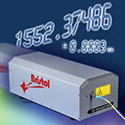|
Wednesday, April 15, 2015
|


|
From the unbreakably hard to the vulnerably soft – from glass, metals and ceramics to plastics and biological tissue – femtosecond lasers are being increasingly adopted for micromachining a range of materials.
|
|
|
|

Livermore Pushes Beyond Flashlamps to Boost Laser Repetition Rates
Representing a total peak power of 3.2 MW, the arrays are destined to become part of the High-Repetition-Rate Advanced Petawatt Laser System (HAPLS) in 2017. Lawrence Livermore National Laboratory has been developing the arrays for integration into the European Union’s Extreme Light Infrastructure (ELI) Beamlines facility under construction in Prague.
|
|
|
|

Inorganic Compound Could Replace Laser Dyes
Borane presents efficient and degradation-resistant laser emission in the blue spectral region, making it suitable for applications such as spectroscopy and materials processing.
|
|
|
|

sponsored content

|
Laser Wavelength Meter
Bristol Instruments, Inc.  Request Info Request Info
The best way to determine the absolute wavelength of CW lasers is with the 621 Series Laser Wavelength Meter. This system provides real-time wavelength information measured to an accuracy as high as ± 0.2 parts per million. This accuracy is guaranteed by continuous calibration with a built-in wavelength standard which ensures the reliable accuracy that is needed to generate the most meaningful experimental results.
|
|
|
READ MORE >>
|
|
|


|
University of Rochester researchers carved microgrooves into sheets of platinum, titanium and brass using an 800-nm laser firing 65-fs pulses. Nanostructures spontaneously form on top of the grooves, giving the metals high optical absorption properties, as well as superhydrophobicity.
|
|
|
|


Nanolaser Uses Atomically Thin Gain Medium
Developed by researchers at the University of Washington and Stanford University, the device incorporates a photonic crystal cavity with a monolayer of tungsten diselenide.
|
|
|
|

|
|
sponsor
 |


|